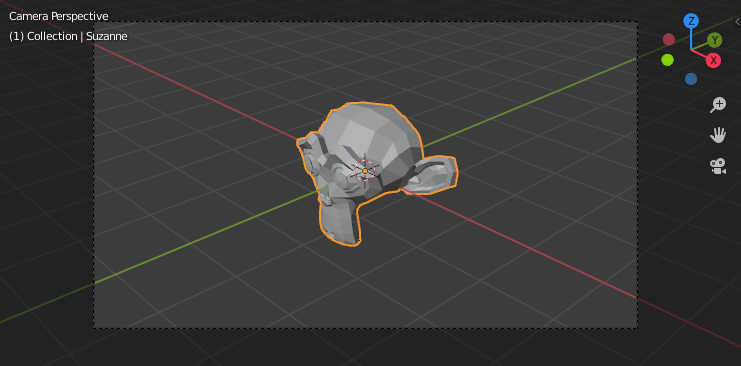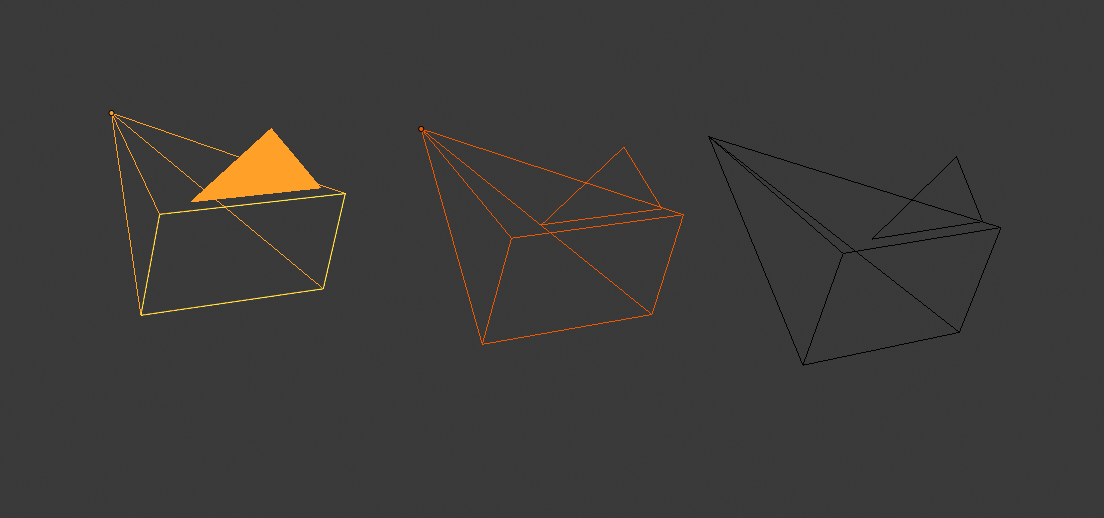Вид камеры
The Camera view shows the current scene as seen from the currently active camera’s view point.
The Camera view can be used to virtually compose shots and preview how the scene will look when rendered.
The rendered image will contain everything within the dashed line.
См.также
Camera Settings for details how camera settings are used for display & rendering.
Подсказка
The active camera can be selected while in camera view using the camera frame
(assuming the object isn’t hidden).
Вид из активной камеры
Справка
- Mode
Все режимы
- Меню
-
- Горячая клавиша
Numpad 0
This switches the view to the active camera.
The triangle above the camera will become shaded when active.
Настройка активной камеры
Справка
- Mode
Объектный режим
- Меню
-
- Горячая клавиша
Ctrl-Numpad0
This sets the current active object as the active camera & switches to the camera view.
The active camera can also be set in the Scene tab of the Properties.
Примечание
The active camera, as well as the layers, can be specific to a given view,
or global (locked) to the whole scene.
See Local Camera.
Анимированное переключение камер
By default a scene contains one camera. However, a scene can contain more than one camera,
but only one of them will be used at a time.
So you will only need to add a new camera if you are making cuts between them.
See Animating Cameras.
Рамка границы камеры
Справка
- Mode
Все режимы
- Меню
-
- Горячая клавиша
Home
Центрирует вид с камеры внутри области экрана 3D-просмотра и увеличивает вид из камеры на всё окно просмотра.
Навигация камеры
There are several different ways to navigate and position the camera in your scene,
some of them are explained below.
Zooming in and out is possible in this view, but to change the viewpoint,
you have to move or rotate the camera.
Подсказка
The active «camera» might be any kind of object.
So these actions can be used, for example, to position and aim a light.
Move Active Camera to View
Справка
- Mode
Объектный режим
- Горячая клавиша
Ctrl-Alt-Numpad0
This matches the active camera to a regular (non camera) view,
for a convenient method of placing the camera without having to move the object directly.
Camera View Positioning
By enabling Lock Camera to View in the View panel of the Sidebar region,
while in camera view, you can navigate the 3D Viewport as usual,
while remaining in camera view. Controls are exactly the same as when normally moving in 3D.
Вращение, Перемещение, Масштабирование и Слежение
To perform these camera moves, the camera must first be selected so transform operations apply to it.
The following actions also assume that you are in camera view.
Having done so, you can now manipulate the camera using the same tools that are used to transform any object:
- Roll (Крен)
Press R to enter object rotation mode. The default will be to rotate the camera in its local Z axis
(the axis orthogonal to the camera view), which is the definition of a camera «roll».
- Vertical Pan or Pitch (вертикальное перемещение)
This is just a rotation along the local X axis. Press R to enter object rotation mode,
then X twice (the first press selects the global axis,
pressing the same letter a second time selects the local axis – this works with any axis;
see the axis locking page).
- Horizontal Pan or Yaw (горизонтальное перемещение)
This corresponds to a rotation around the camera’s local Y axis.
Press R, and then Y twice.
- Dolly (наезд)
Чтобы подкатить камеру, нажмите G, затем СКМ (или дважды Z).
- Sideways Tracking (боковое слежение)
Press G and move the mouse (you can use X twice or Y
to get pure-horizontal or pure-vertical sideways tracking).

